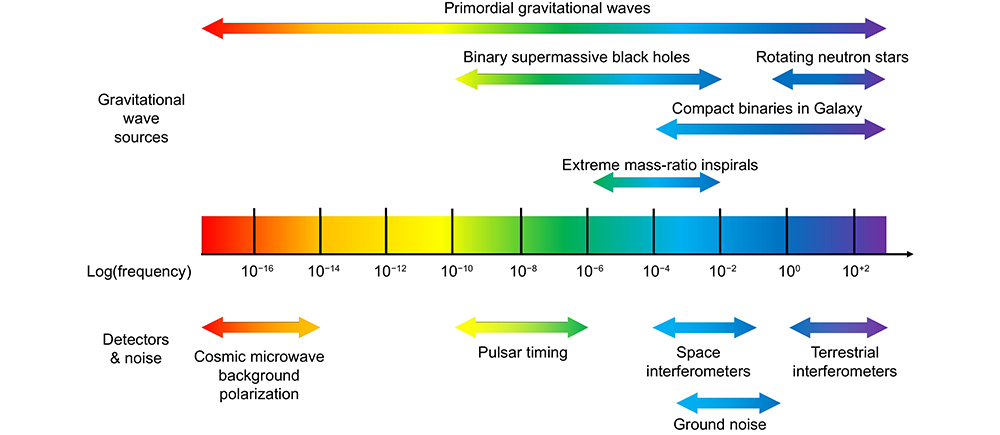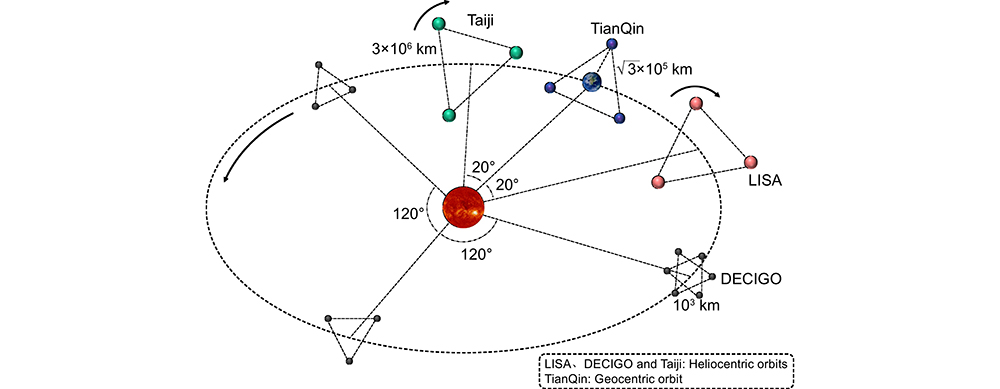Lanqiang Zhang, Yi Zeng, Xiaohu Wu, Jinsheng Yang, Xiaoli Ruan, Qiang Xin, Naiting Gu, Changhui Rao. Progress in the research of testing and evaluation techniques for spaceborne gravitational wave telescopes[J]. Opto-Electronic Engineering, 2024, 51(2): 240027
Search by keywords or author
- Opto-Electronic Engineering
- Vol. 51, Issue 2, 240027 (2024)

Fig. 1. Gravitational wave spectrum

Fig. 2. Developing space gravitational wave detectors
Fig. 3. Schematic diagram of space gravitational wave detectors. (a) Triangular constellation and six links of detectors; (b) Laser links between two spacecrafts[9]
Fig. 4. Main research progress of spaceborne telescopes for gravitational wave detection[15-18,21-36]
Fig. 5. Space gravitational wave detection spaceborne telescope ground integrated test platform
Fig. 6. LISA telescope assembly dimensional stability test by Verlaan et al. (a) Schematic of TA’s length metrology platform; (b) Thermal vacuum test scheme[28,47]
Fig. 7. Optical path length stability test of LISA telescope based on heterodyne interferometry at the University of Florida. (a) Schematic of optical path length stability test platform; (b) ULE proto-TTS[32]
Fig. 8. TTS and dimension test result of ULE pTTS. (a) OptoCAD model of TTS; (b) Length noise test results of reference cavity and ULE pTTS and LISA requirement[32]
Fig. 9. Stability test of SiC frame of Taiji telescope based on fiber interferometer by Sang et al. (a) Principle of stability testing with fiber optic interferometer; (b) Schematic of the frame stability test platform; (c)Test platform pictures[33]
Fig. 10. SiC frame dimensional stability test and numerical simulation results. (a) Power spectrum of room temperature environment test; (b) Power spectrum of in-orbit numerical simulation[33]
Fig. 11. Dimensional stability test of Taiji telescope’s C/SiC support frame by Shen et al. (a) The thermal design of the test structure; (b) The multi-channel heterodyne interferometer test platform[34]
Fig. 12. Schematic of the optical path length stability measurement scheme for the space gravitational wave detection spaceborne telescope[50]
Fig. 13. Schematic of the coherent stray light detection based on the heterodyne interferometry[35]
|
|
Table 2. CFRP telescope assembly structure thermo-mechanical requirements and tested performances[47]

Set citation alerts for the article
Please enter your email address



